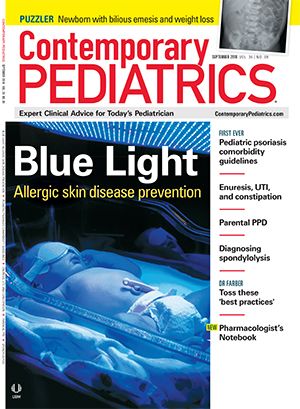8 best practices to toss
In my 40-plus years of pediatrics, I have sometimes treated patients based on the best of intentions, but with perhaps the worst of evidence. Here are some “best practices” I have used, and discarded, over time.
1. Green mucus meant a bacterial infection and warranted antibiotics (we are still paying for teaching that to grandparents). A cough for more than 10 days meant a sinus infection1 and also meant we could use antibiotics.
2. Respiratory syncytial virus (RSV) infection was routinely treated with albuterol and sometimes steroids (some physicians still do this). Prior to that, ribavirin use was common in the hospital. Even before that, there was actually a vaccine for RSV, which unfortunately resulted in children getting “enhanced RSV,” making them much sicker than they would have been otherwise (this last was before my time).
3. In my day, I have treated serous otitis media with antihistamines, decongestants, steroids, prophylactic antibiotics, and placement of tubes (even if hearing was normal).
4. A boy of any age, or a girl who was not toilet trained, who developed a first urinary tract infection (UTI) needed a renal ultrasound and voiding cystourethrogram (VCUG).2 If it showed reflux, they were then put on prophylactic antibiotics until a subsequent VCUG could show the reflux was gone.
5. Because reflux could run in families, if such a child had siblings aged younger than 10 years or so, they also needed a VCUG,3 and treatment if positive.
6. Codeine was used for coughs in children aged 3 years and older. We had prescription decongestant/dextromethorphan combinations that came with droppers, so that we could dose infants with colds “properly.”
7. A first febrile seizure, even if a child looked great, could mean meningitis. We would do a spinal tap, admit for intravenous antibiotics until the culture was negative (regardless of whether the tap looked clear or not), and send the child home on phenobarbital for 2 years to prevent further seizures.4
8. Some pediatricians would give phenobarbital only during a fever. We more knowledgeable doctors would scoff at them, knowing, correctly, that the phenobarbital would not build up to a protective level in the blood in time. Of course, because phenobarbital was dangerous, those doctors were providing better care, albeit out of ignorance.
References:
1. Wald ER, Applegate KE, Bordley C, et al; American Academy of Pediatrics. Clinical practice guideline for the diagnosis and management of acute bacterial sinusitis in children aged 1 to 18 years. Pediatrics 2013;132(1):e262-e280.
2. Bellinger MF. The management of vesicoureteric reflux. Urol Clin North Am. 1985;12(1):23-29.
3. Peeden JN Jr, Noe HN. Is it practical to screen for familial vesicoureteral reflux within a private pediatric practice? Pediatrics 1992;89(4 pt 2):758-760.
4. Pollack MA. Continuous phenobarbital treatment after a ‘simple febrile convulsion.’ Am J Dis Child. 1978;132(1):87-89.
